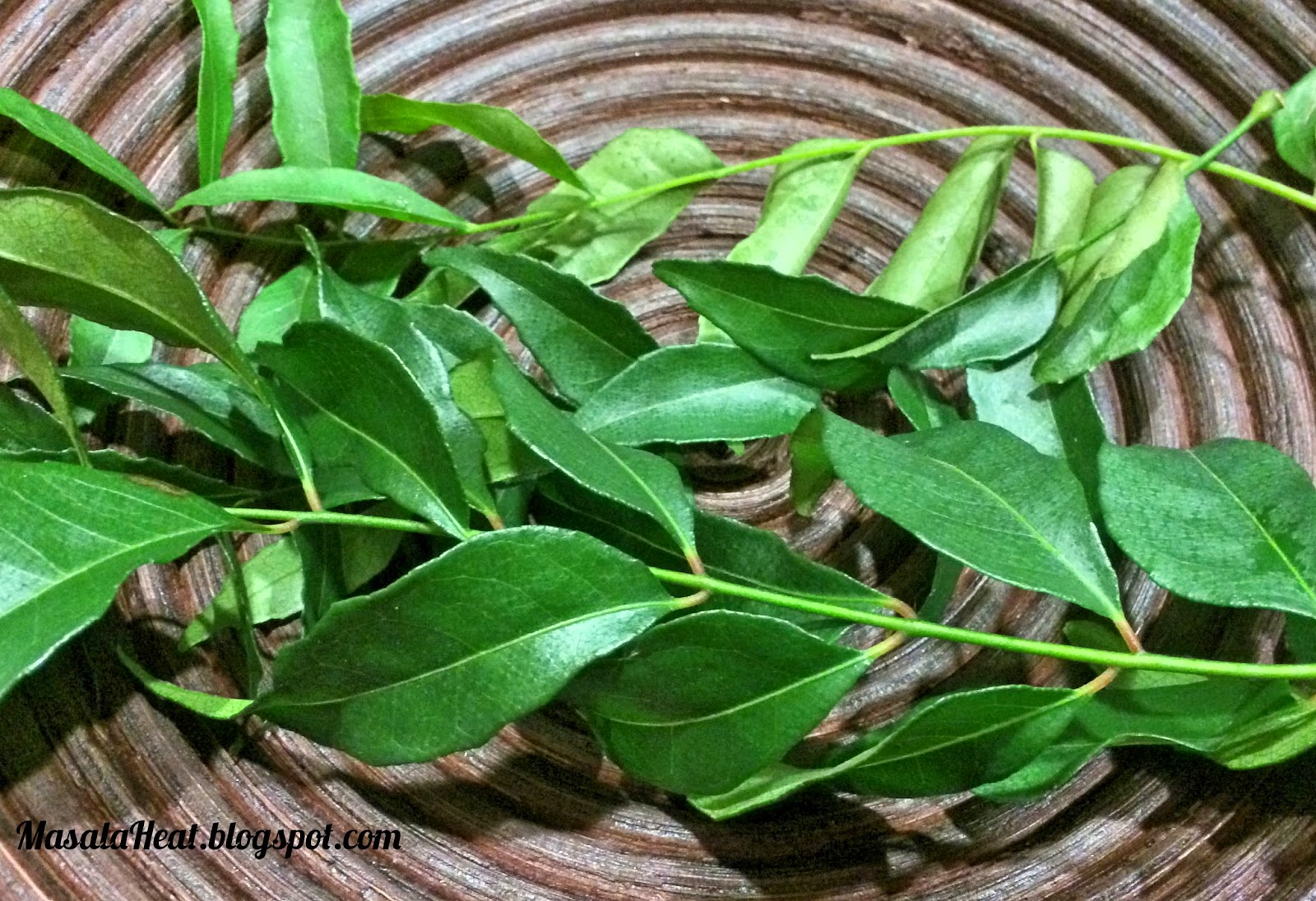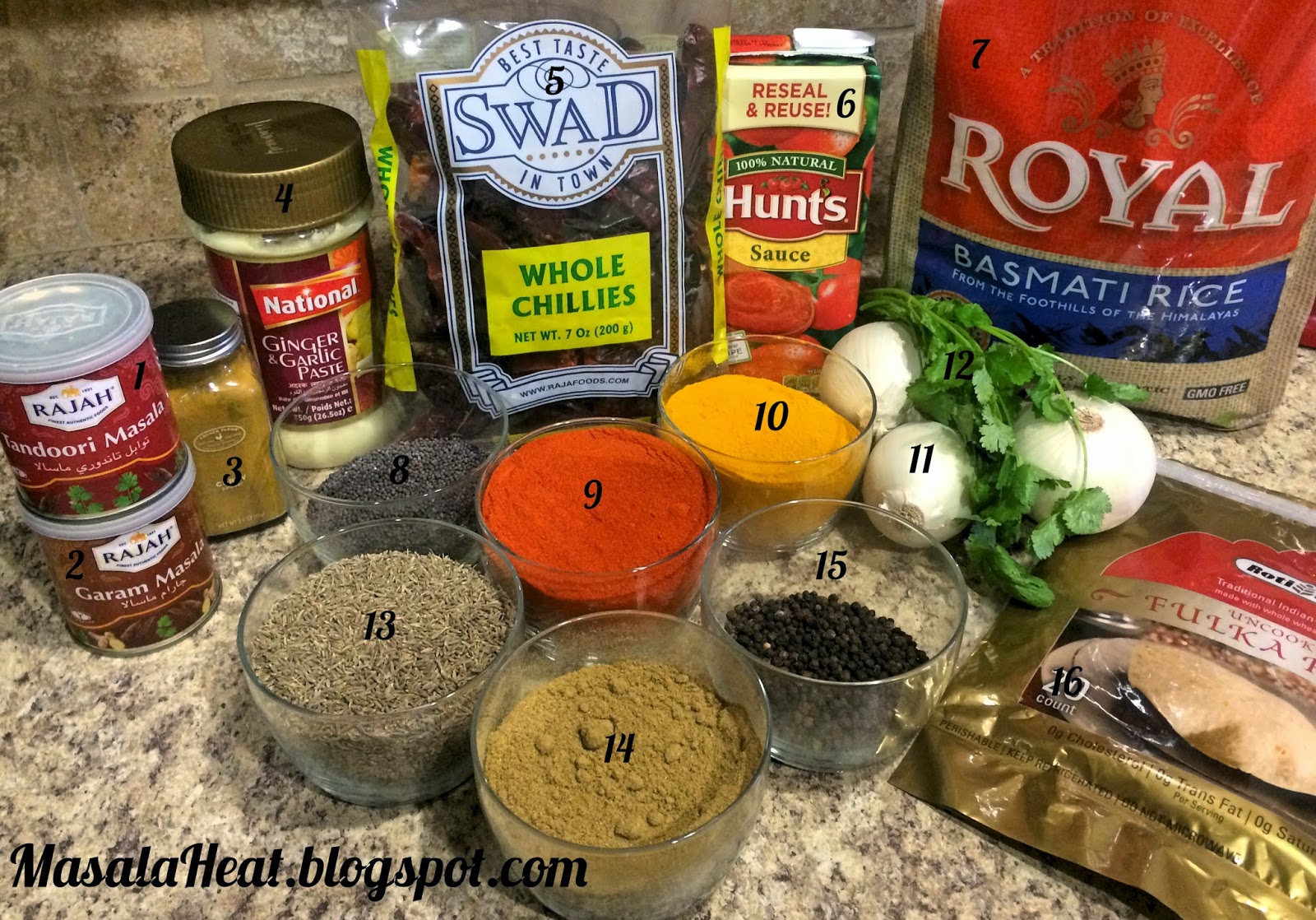To cook Indian food you should not have to go out and buy a million different spices and other ingredients. Unless I am creating one of my custom spice blends, the number of ingredients I use for a dish is pretty minimal. You don't have to go out and purchase all these ingredients at once, these are just some suggestions for those looking to build up more of a spice/ingredient arsenal.
Commonly Used Spices & Ingredients
1. Tandoori Masala Spice Mix
Used to marinate meat for grilling. Some of the most common dishes made using this is chicken tikka and butter chicken.
2. Garam Masala Spice Mix
A traditional universal spice used in most dishes.
3. Curry Powder
A staple for curry dishes.
4. Ginger & Garlic Paste
Using these ingredients in a paste form both saves time and makes for a smoother sauce.
5. Whole Chillies
Adds an extra "kick" to a dish and gives a more smokey flavor as opposed to using a green chili or serrano peppers. They are also used for tempering dishes.
6. Tomato Sauce
This is the best substitute for fresh tomatoes. It cuts your cooking time in half and makes for a smoother sauce.
7. Basmati Rice
As jasmine rice works best for Chinese dishes, basmati rice is the perfect match for Indian food. A few tips when making this rice are to wash it at least 4 times and use the ratio of 1 cup of rice to 2 cups water.
8. Mustard Seeds
Used for more South Indian dishes as well as curry flavored dishes.
9. Chili Powder
An all purpose spice used of course for adding the heat to dishes. I recommend trying to find Deggi Mirch (Kashmir Chili Powder) because it is high in color, low on heat and is very comparable to Hungarian paprika.
10. Turmeric
Actually has health benefits as it is a natural antiseptic. Cooking wise it adds color and flavor. A commercial curry powder contains a high content of Turmeric, hence the color of that spice blend.
11. Onions
A staple in Indian dishes.
12. Cilantro
The most common herb used for garnishing and also for adding color and flavor.
13. Cumin Seeds
A staple spice used in most of the North Indian dishes as well as a common component in the majority of spice blends.
14. Coriander Powder
Another common ingredient in South Indian dishes, it is used mainly with mustard and curry dishes.
15. Peppercorn
Used to provide heat in a dish. I do not recommend using this ingredient in its whole form as biting into it can make for a bad experience.
15. Roti
Comparable to a tortilla. I find this to be a lighter/healthier bread option to Naan. We still eat Naan bread in our household but the majority of the time we will enjoy these at meal time.
Commonly Used Whole Spices
1. Cardamon
2. Bay Leaves
3. Cinnamon
4. Nutmeg
6. Cloves
7. Cumin
8. Coriander
9. Peppercorn
Examples of products readily found at your normal grocery store.
You don't always have to visit an international grocery store to stock up on ingredients. The only downside would be is if you don't have a grocery store that sells bulk spices as you can end up paying more for a smaller amount of product when you have to buy small jars. We often buy a lot of the more common spices we use in our household at the international market because it ends up being a better deal.
Examples of items that you will have to purchase in an international market or online.
These are your more specialty items and therefore will have to come from an international market or online. While you can buy Basmati Rice at your normal grocery store that can get very expensive so it is best to purchase at a speciality store.
These are just some of the basics to get you started and give you some visual clues as to what these these ingredients look like to help with your shopping trip.
Now let's get cooking! Up next: Chicken Masala















